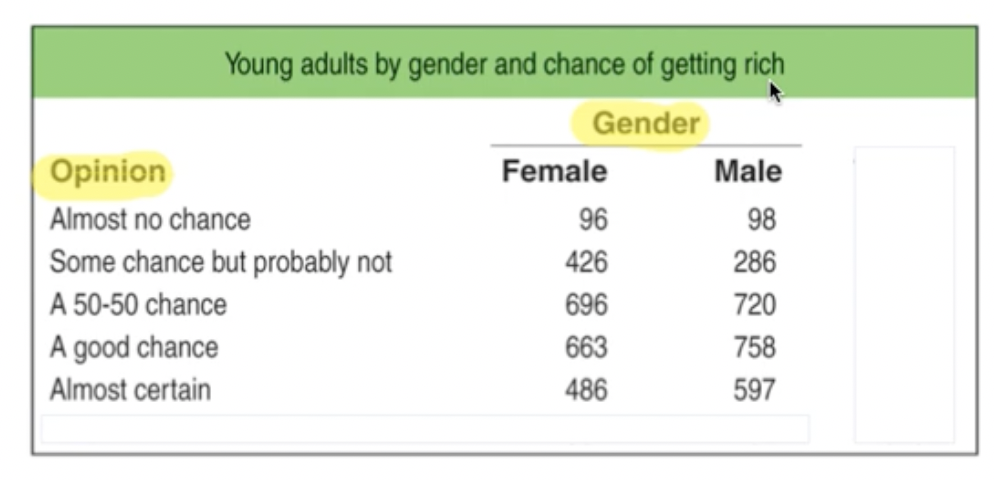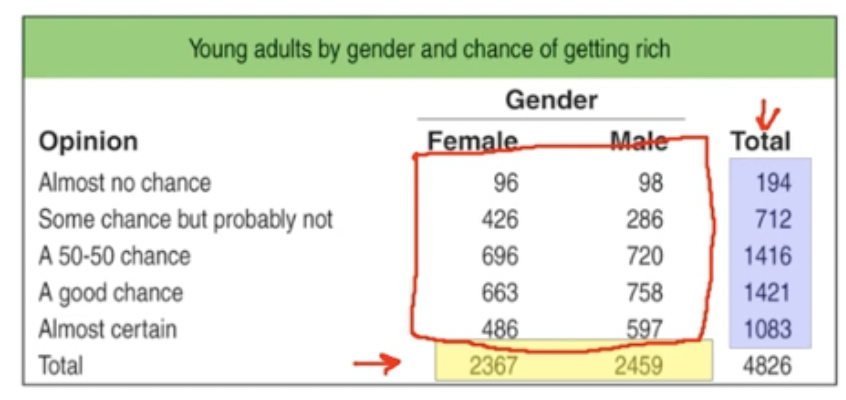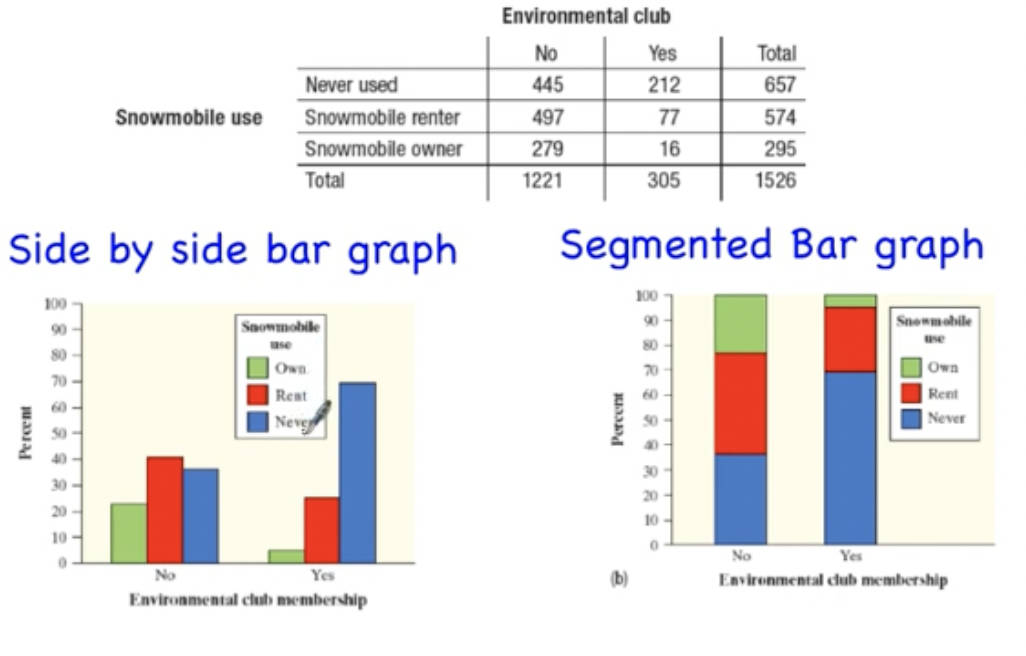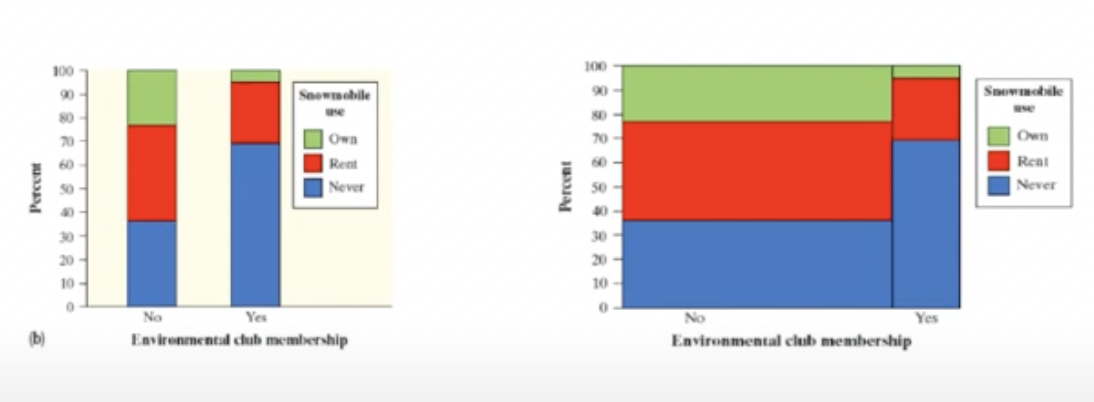3.1: Correlation and Variate Relationships
Two-Variable (Bi-Variate) Relationships
- Explanatory variable: a variable that attempts to explain or influence observed outcomes
- What is being used to make the prediction
- Displayed on the x-axis
- Response variable: a variable that measures some outcome
- What is being predicted
- Displayed on the y-axis
Describing Scatterplots and Bi-Variate Data: FUDS
- Form: linear, curve, u-shape, etc.
- Unusual Points: outliers, influential points
- Outlier: a point with a large residual (usually decreases the correlation)
- Influential: a point which draws the line toward it (usually increases the correlation)
- Direction: positive or negative association (or neither)
- Positive association—as one variable increases, so does the other
- Negative association—as one variable increases, the other decreases
- Strength: how closely the points follow the form
- Strong, weak, moderately strong/weak
Residuals
- Individual points with large residuals are outliers in the y direction because they lie far from the line that describes the overall pattern
- Individual points that are extreme in the x direction may not have large residuals, but can be very important; such points are influential if removing them would markedly change the results of the calculation
Correlation (r)
- Gives the direction and strength of a linear relationship
- Does not imply causation
- Makes no distinction between explanatory and response variables
- Can switch x’s and y’s and they would still be correlated
- Both variables must be quantitative
- Standardized and will not change if we change/convert units of measurement from x, y, or both
- r itself has no units
- Positive r = positive association
- Negative r = negative association
- Correlation only measures strength and direction of linear relationships
- -1 ≤ x ≤ 1 always
- The closer r is to 1 or -1, the stronger the linear form
- The closer r is to 0, the weaker the linear form and the more scattered the points are
- r does not tell the whole story
Displaying Data
Two-Way Tables
Two-way table: a table that displays data for two categorical variables about the same group of individuals

Marginal distribution: the total for one categorical variable

The yellow box shows the marginal distribution for gender, and the purple box is the marginal distribution of opinions
Conditional distribution: the distribution within just one value of one variable
- Often uses language of the probability of A “given” B
Segmented Bar Graphs
Also known as segmented bar charts
Segmented bar graph: a chart that displays categorical data as a percentage of the whole
- Similar to a pie chart

Mosaic Plots
Mosaic plot: a segmented bar graph used to compare groups where the widths of the bars are proportional to the size of the groups
Mosaic plots of the same data from the previous section:
